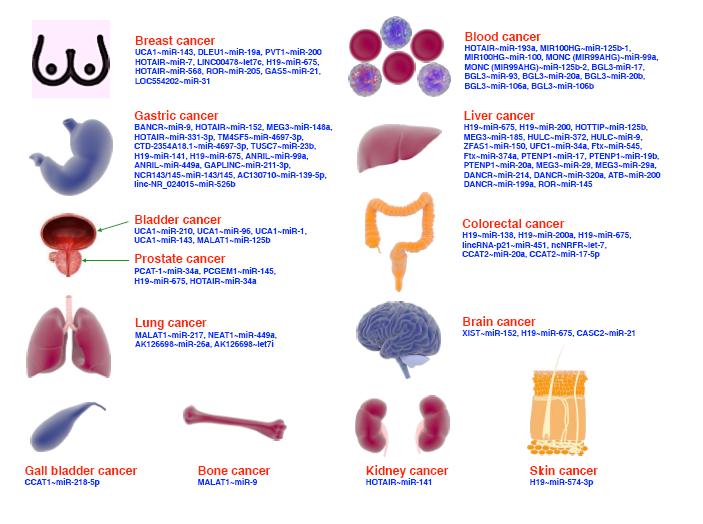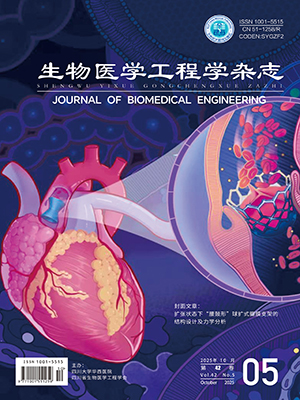| 1. |
刘国昇. 保护好人体最大的器官——皮肤. 健康向导, 2021, 27(6): 44-45.
|
| 2. |
Gottrup F. A specialized wound-healing center concept: importance of a multidisciplinary department structure and surgical treatment facilities in the treatment of chronic wounds. Am J Surg, 2004, 187(5A): 38S-43S.
|
| 3. |
袁皓, 杨童玲. 新生儿医源性皮肤损伤处理的专家共识. 中国循证儿科杂志, 2021, 16(4): 255-261.
|
| 4. |
张晓翠, 尹雪梅, 张学颖, 等. 新生儿病房护士对新生儿医源性皮肤损伤及其高危因素认知的现状调查. 天津护理, 2024, 32(2): 159-163.
|
| 5. |
武荣伟, 王堠崟, 王远鑫, 等. 2000—2020年中国县域人口老龄化分布格局及其影响因素. 热带地理, 2024, 44(8): 1500-1512.
|
| 6. |
喻强. 农村公共卫生服务发展中存在的问题及对策. 现代农村科技, 2024(8): 2-3.
|
| 7. |
Landén N X, Li D, Ståhle M. Transition from inflammation to proliferation: a critical step during wound healing. Cell Mol Life Sci, 2016, 73(20): 3861-3885.
|
| 8. |
蒋晓蕾, 朱立宏. 复方黄柏液激活Notch1/Twist1轴对皮肤溃疡大鼠伤口愈合的影响. 中国免疫学杂志, 2023, 39(12): 2560-2565.
|
| 9. |
Lin S Y, Wang Q X, Huang X T, et al. Wounds under diabetic milieu: The role of immune cellar components and signaling pathways. Biomed Pharmacother, 2023, 157: 114052.
|
| 10. |
Pastar I, Stojadinovic O, Yin NC, et al. Epithelialization in wound healing: a comprehensive review. Adv Wound Care, 2014, 3(7): 445-464.
|
| 11. |
Tüzün Y, Antonov M, Dolar N, et al. Keratinocyte cytokine and chemokine receptors. Dermatol Clin, 2007, 25(4): 467-476.
|
| 12. |
Gordon S, Taylor P. Monocyte and macrophage heterogeneity. Nat Rev Immunol, 2005, 5: 953-964.
|
| 13. |
Mittal M, Siddiqui M R, Tran K, et al. Reactive oxygen species in inflammation and tissue injury. Antioxid Redox Signal, 2014, 20(7): 1126-1167.
|
| 14. |
Lewis C J, Stevenson A, Fear M W, et al. A review of epigenetic regulation in wound healing: Implications for the future of wound care. Wound Repair Regen, 2020, 28(6): 710-718.
|
| 15. |
Kalmar I D, Verstegen M W, Maenner K, et al. Tolerance and safety evaluation of N,N-dimethylglycine, a naturally occurring organic compound, as a feed additive in broiler diets. Br J Nutr, 2012, 107(11): 1635-1644.
|
| 16. |
Cools A, Maes D, Buyse J, et al. Effect of N,N-dimethylglycine supplementation in parturition feed for sows on metabolism, nutrient digestibility and reproductive performance. Animal, 2010, 4(12): 2004-2011.
|
| 17. |
Kalmar I D, Cools A, Buyse J, et al. Dietary N,N-dimethylglycine supplementation improves nutrient digestibility and attenuates pulmonary hypertension syndrome in broilers. J Anim Physiol Anim Nutr (Berl), 2010, 94(6): e339-347.
|
| 18. |
Takahashi T, Sasaki K, Somfai T, et al. N, N-Dimethylglycine decreases oxidative stress and improves in vitro development of bovine embryos. J Reprod Dev, 2016, 6(2): 209-212.
|
| 19. |
Lin J C, Chan M H, Lee M Y, et al. N,N-dimethylglycine differentially modulates psychotomimetic and antidepressant-like effects of ketamine in mice. Prog Neuropsychopharmacol Biol Psychiatry, 2016, 71: 7-13.
|
| 20. |
Hsieh C P, Chen S T, Lee M Y, et al. N, N-dimethylglycine protects behavioral disturbances and synaptic deficits induced by repeated ketamine exposure in mice. Neurscience, 2021, 472: 128-137.
|
| 21. |
Dhanjal D S, Bhardwaj S, Chopra C, et al. Millennium nutrient N,N-dimethylglycine (DMG) and its effectiveness in autism spectrum disorders. Curr Med Chem, 2022, 29(15): 2632-2651.
|
| 22. |
Hsieh C P, Chen H, Chan M H, et al. N,N-dimethylglycine prevents toluene-induced impairment in recognition memory and synaptic plasticity in mice. Toxicology, 2020, 446: 152613.
|
| 23. |
Lendvai A, Béke G, Hollósi E, et al. N,N-dimethylglycine sodium salt exerts marked anti-inflammatory effects in various dermatitis models and activates human epidermal keratinocytes by increasing proliferation, migration, and growth factor release. Int J Mol Sci, 2023, 24(14): 11264.
|
| 24. |
Béke G, Lendvai A, Hollósi E, et al. Topically applied N,N-dimethylglycine sodium salt enhances human skin blood flow by inducing endothelial nitric oxide release. J Invest Dermatol, 2024, 144(12): 2823-2827.
|
| 25. |
李姝娇. 多肽AWRK6促进糖尿病小鼠皮肤创面愈合的作用及机制研究. 沈阳: 辽宁大学, 2023.
|
| 26. |
熊翱, 熊仁平, 彭艳, 等. 原代滑膜细胞培养及同时提取微量总RNA和蛋白质的方法在体外细胞分子生物学研究中的应用. 中华骨与关节外科杂志, 2022, 15(4): 276-282.
|
| 27. |
Yao H, Hu Y, Tong H, et al. Dimethylglycine alleviates metabolic dysfunction-associated fatty liver disease by improving the circulating estrogen level via gut staphylococcus. J Agric Food hem, 2024, 72(5): 2708-2717.
|
| 28. |
Picaud J C, De Magistris A, Mussap M, et al. Urine NMR metabolomics profile of preterm infants with necrotizing enterocolitis over the first two months of life: a pilot longitudinal case-control study. Front Mol Biosci, 2021, 8: 680159.
|
| 29. |
Michail K, Baghdasarian A, Narwaley M, A et al. Scavenging of free-radical metabolites of aniline xenobiotics and drugs by amino acid derivatives: toxicological implications of radical-transfer reactions. Chem Res Toxicol, 2013, 26(12): 1872-1883.
|
| 30. |
Zhang J, Jiang C, Liu X, et al. The metabolomic profiling identifies N, N-dimethylglycine as a facilitator of dorsal root ganglia neuron axon regeneration after injury. FASEB J, 2022, 36(5): e22305.
|
| 31. |
Morasso M I, Tomic-Canic M. Epidermal stem cells: the cradle of epidermal determination, differentiation and wound healing. Biol Cell, 2005, 97(3): 173-183.
|
| 32. |
Xu W, Dielubanza E, Maisel A, et al. Staphylococcus aureus impairs cutaneous wound healing by activating the expression of a gap junction protein, connexin-43 in keratinocytes. Cell Mol Life Sci, 2021, 78(3): 935-947.
|
| 33. |
唐凤玲. 溶胶-凝胶生物活性玻璃调控角质形成细胞屏障功能及其机制研究. 广州: 华南理工大学, 2020.
|
| 34. |
Masse I, Barbollat-Boutrand L, Kharbili M E, et al. GATA3 inhibits proliferation and induces expression of both early and late differentiation markers in keratinocytes of the human epidermis. Arch Dermatol Res, 2014, 306(2): 201-208.
|
| 35. |
廖倩, 于春水, 汪瀚文. 皮肤屏障中分化蛋白的研究进展. 实用皮肤病学杂志, 2017, 10(6): 354-356.
|
| 36. |
黄钰淇, 李里, 钟维, 等. sprouty4蛋白对角质形成细胞增殖及分化的影响. 皮肤性病诊疗学杂志, 2020, 27(3): 147-150.
|
| 37. |
Kroeze K-L, Boink M A, Sampat-Sardjoepersad S C, et al. Autocrine regulation of re-epithelialization after wounding by chemokine receptors CCR1, CCR10, CXCR1, CXCR2, and CXCR3. J Invest Dermatol, 2012, 132(1): 216-225.
|
| 38. |
Krausgruber T, Fortelny N, Fife-Gernedl V, et al. Structural cells are key regulators of organ-specific immune responses. Nature, 2020, 583(7815): 296-302.
|
| 39. |
Feliciani C, Gupta A K, Sauder D N. Keratinocytes and cytokine/growth factors. Crit Rev Oral Biol Med, 1996, 7(4): 300-318.
|
| 40. |
Herold K, Mrowka R. Inflammation-Dysregulated inflammatory response and strategies for treatment. Acta Physiol, 2019, 226(3): e13284.
|
| 41. |
Niebuhr M, Baumert K, Werfel T. TLR-2-mediated cytokine and chemokine secretion in human keratinocytes. Exp Dermatol, 2010, 19(10): 873-877.
|
| 42. |
Mulder P P G, Vlig M, Fasse E, et al. Burn-injured skin is marked by a prolonged local acute inflammatory response of innate immune cells and pro-inflammatory cytokines. Front Immunol, 2022, 13: 1034420.
|
| 43. |
Rodrigues A E, Dolivo D, Li Y, et al. Comparison of thermal burn-induced and excisional-induced scarring in animal models: a review of the literature. Adv Wound Care, 2022, 11(3): 150-162.
|
| 44. |
Sadeghipour H, Torabi R, Gottschall J, et al. Blockade of IgM-mediated inflammation alters wound progression in a swine model of partial-thickness burn. J Burn Care Res, 2017, 38(3): 148-160.
|
| 45. |
Petreaca M L, Do D, Dhall S, et al. Deletion of a tumor necrosis superfamily gene in mice leads to impaired healing that mimics chronic wounds in humans. Wound Repair Regen, 2012, 20(3): 353-366.
|




